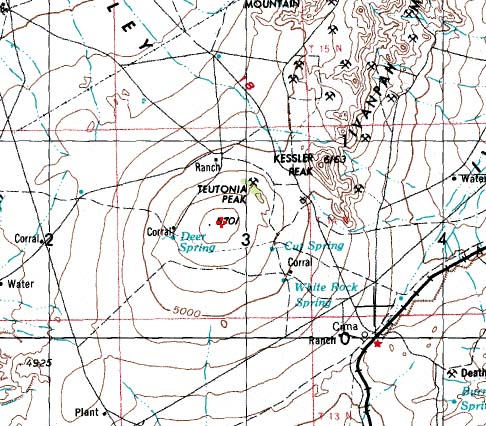The holiday break begins with a quick trip to visit an old friend who’s vacationing in Palm Springs. I seem to bring warm weather with me: the days are in the upper 70s and the air is desert-dry. The local weather report whines about only “partially sunny” conditions, though the only clouds I see are thin white veils high in the atmosphere. Good hiking weather, I think. My friend is just a little equivocal but he finally caves. “OK, but nothing too strenuous.”
The North Lykken Trail is picked for its easy proximity to where we’re staying and its promise of nice aerial views of the Palm Springs and the rest of the Coachella Valley. The online writeup calls it “moderately strenuous,” as does Philip Ferranti’s 140 Great Hikes in and Near Palm Springs. It seems doable and fun, so off we go.
Blooming chuparosa (Justicia californica, this first image) is everywhere. And where there’s chuparosa, there are hummingbirds and buzzing clouds of bees feeding on its nectar.
Plants of brittlebush (Encelia farinosa) are everywhere too, but most are just leafing out from their long dry summertime coma. Soon they’ll be covered in bright yellow daisies. This plant usually calls dryer areas home but can be found all the way to the coast, and it’s used a lot in landscaping projects.
Here’s a barrel cactus (Ferocactus cylindraceus) with an awesome view of the city.
Maybe we’re distracted by the view or I’m too focused on the plantlife, but by about now we’re scrambling over piles of rocks, in and out of drainages, looking for the trail. If we were deep somewhere in the wilds without a map we might be getting concerned. But how can you say you’re lost when there’s a big city grid down below as a reference point? Okay, we’re not really lost, but some of this is on the strenuous side of “moderately strenous.” But not for too much longer. We find some other hikers off in the distance and get back on the trail.
With the trail securely underfoot it’s easier to take in the great rock formations and enjoy more of the views.
It’s a bit away from peak bloom but there are a few other things to see. This is one of the desert plants I’ve always found pretty interesting, whether it’s in bloom or not. Desert trumpet or pipeweed (Eriogonum inflatum) is an unmistakable buckwheat that usually has flowering stems with a fat trumpeting protuberance below the nodes of its bloom spikes. Often it’s a lot more pronounced than in these two photos.
Sometimes, though, you find a plant that produces stems that are wiry and delicate, with none of the bulging that you see here. Some botanist had some fun naming that one: Eriogonum inflatum var. deflatum.
Looking at views and plants is hard work, so we take a number of brief breaks, this one in Chino Canyon. (That’s me to the right, the slavedriver ready to move on to the next ridge.)
This is a hike that makes you hyper-aware of the edges where the desert ends and irrigated human habitation begins. Even though the plants used in this home’s landscaping may say “desert” to you, you can see that the real desert here isn’t one that stays palm-tree-green year-round.
Even a collection of dryland plants can require water to keep looking good when they’re planted closer together than you’d find them in nature. Also, some of these plants–particularly the palms–would be only found in more riparian desert habitats, not here where the homeowner wanted them. Check out the drip-irrigation octopus in the lower right corner.
But I suppose it’s hard to resist the temptation to landscape with the plant that’s in your city’s name. Now we’ll just have to work on the “springs” part to make sure all the palms have enough water to survive this challenging piece of desert.
So by now you’ve probably guessed that at least one of us survives the hike. We both do, actually, but are a little sore the next morning. That’s where the artificial springs–the burbling hot tub, in this case, in the semi-shade of the palm trees–comes in handy.
And then my liberal guilt kicks in. As a tourist am I perpetuating a double standard, expecting water and shade be provided me, when I might expect the people living here to make do with less? Okay, if I had to choose, I really could do without the hot tub. But the hike was great.

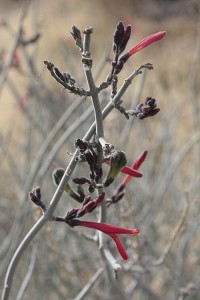
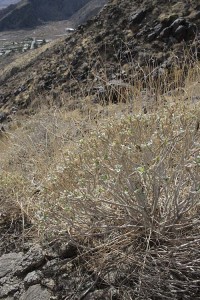
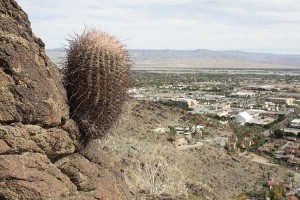


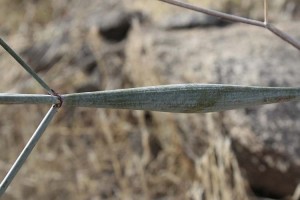
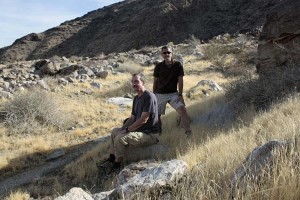
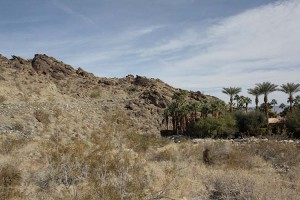
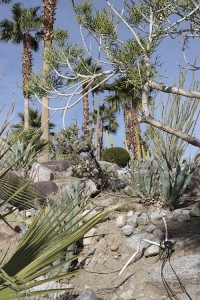
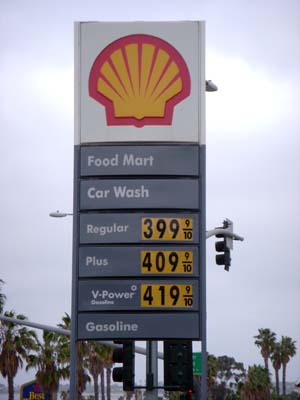 These days I worry about gas prices, my
These days I worry about gas prices, my 